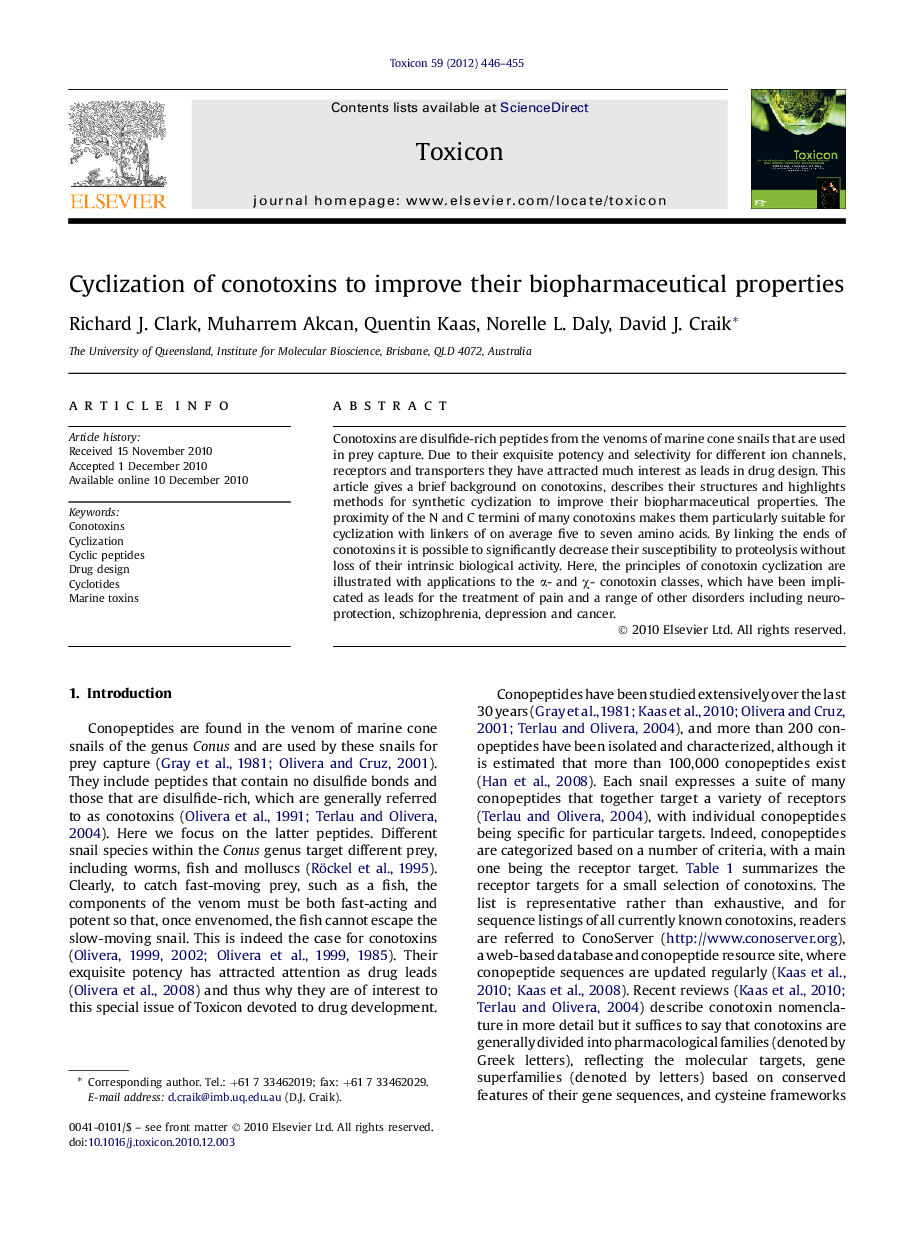| Article ID | Journal | Published Year | Pages | File Type |
|---|---|---|---|---|
| 2065502 | Toxicon | 2012 | 10 Pages |
Conotoxins are disulfide-rich peptides from the venoms of marine cone snails that are used in prey capture. Due to their exquisite potency and selectivity for different ion channels, receptors and transporters they have attracted much interest as leads in drug design. This article gives a brief background on conotoxins, describes their structures and highlights methods for synthetic cyclization to improve their biopharmaceutical properties. The proximity of the N and C termini of many conotoxins makes them particularly suitable for cyclization with linkers of on average five to seven amino acids. By linking the ends of conotoxins it is possible to significantly decrease their susceptibility to proteolysis without loss of their intrinsic biological activity. Here, the principles of conotoxin cyclization are illustrated with applications to the α- and χ- conotoxin classes, which have been implicated as leads for the treatment of pain and a range of other disorders including neuroprotection, schizophrenia, depression and cancer.
